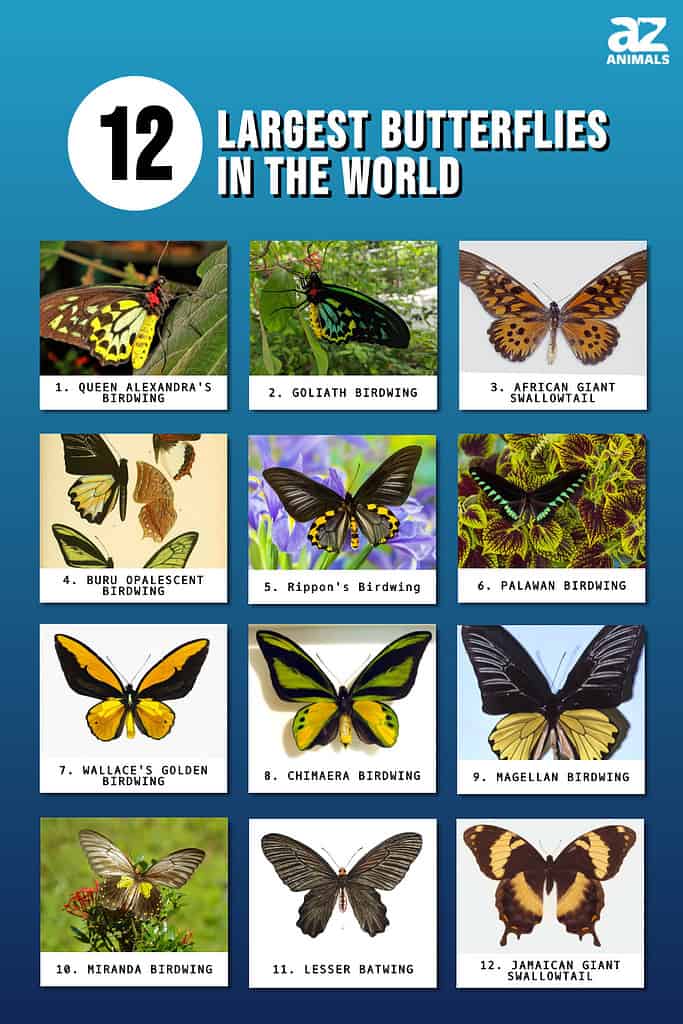
Butterflies are not only one of the most beautiful creatures on earth, but they also have an incredibly important ecological role as pollinators and have been significant in human culture for thousands of years. Paintings of butterflies in Egypt have been dated to 3500 years old and butterflies are described in song and poetry around the world.
Butterflies are less efficient pollinators than bumblebees because they lack specialized structures for pollen collection. For example, honeybees have corbiculae, also known as pollen baskets, on their hind legs for efficiently collecting pollen. Bumblebees are especially good at pollinating tubular-shaped flowers because of their long, thin tongue. The small hairs on their body collect pollen while they are working their way across the flower. Butterflies do not collect pollen to use as food as bees do, rather they inadvertently pollinate flowers with their wings when they drink their nectar.
There are over 24,000 species of butterflies that are exceptionally diverse in size, color, and shape. Interestingly, a butterfly’s wings are covered with small scales measuring between 30-80 micrometers by 30-500 micrometers in an area that refracts light to produce the vibrant colors we see. The bright patterns on butterfly wings are thought to serve many purposes including attracting mates and deceiving predators.
This article will explore a few of the largest species of these beautiful creatures. These are the 12 largest butterflies based on maximum wingspan.
#12: Jamaican Giant Swallowtail – 6 inch wingspan
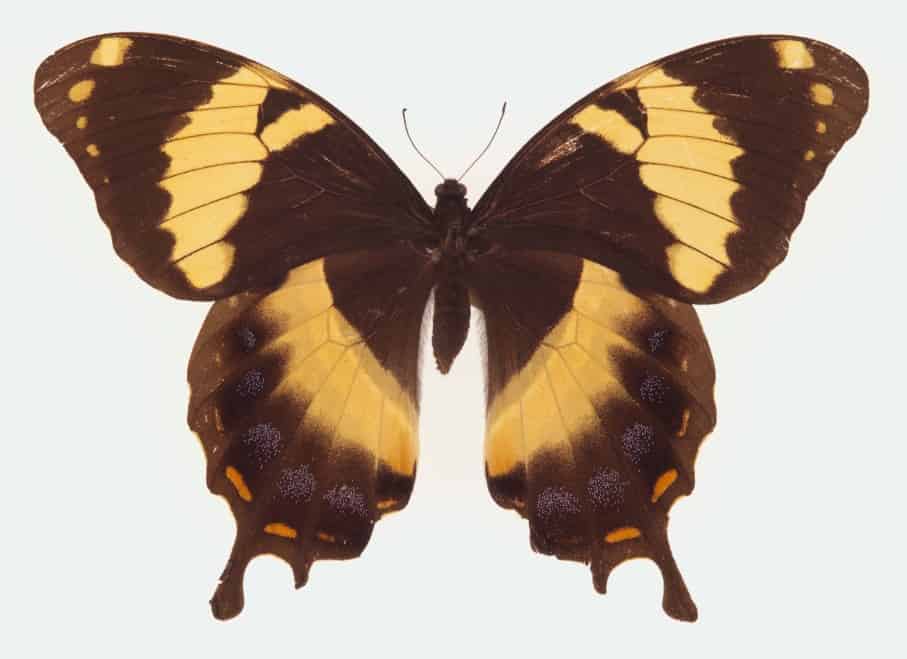
This butterfly is endemic to Jamaica and is classified as endangered.
©Robert Nash / CC BY-SA – License
The female Jamaican giant swallowtail, also known as the Homerus swallowtail, can have a maximum wingspan of about 6 inches. This butterfly is endemic to Jamaica and is classified as endangered. There are only two isolated populations in Jamaica in existence today. In the caterpillar stage, the Jamaican giant swallowtail has a unique organ called an osmeterium behind its head that emits a foul smell when the caterpillar feels threatened by predators.
#11: Lesser Batwing – 6.4 inch wingspan
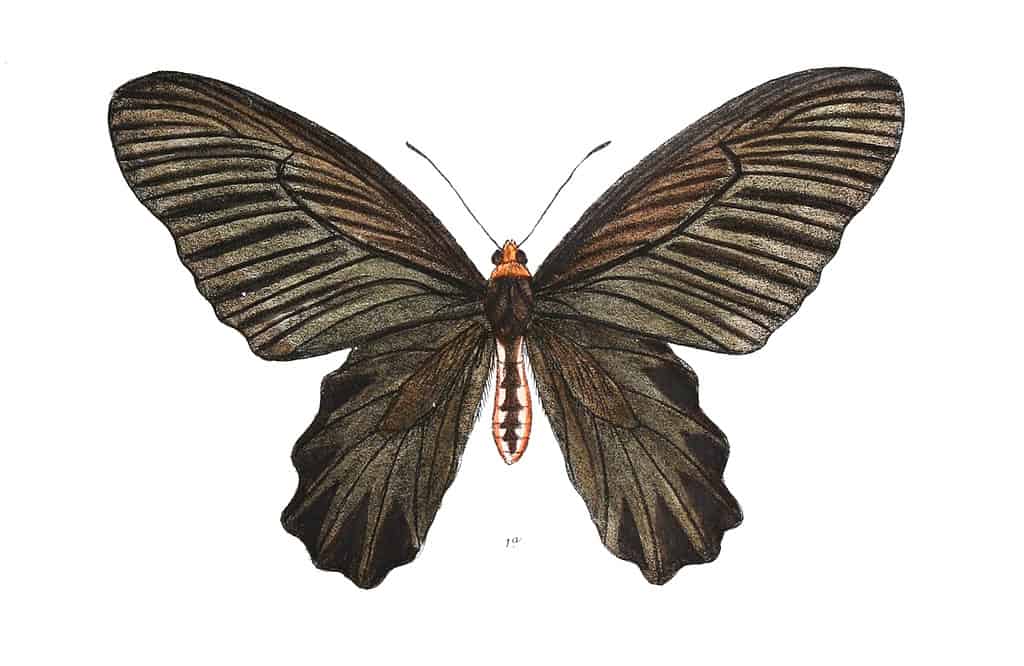
Although it is not incredibly common, the lesser batwing is not considered to be a threatened species.
©J N Fitch / Public Domain – License
The lesser batwing butterfly is an Asian butterfly that has a wingspan of up to 6.4 inches. This butterfly can primarily be found in northern India, Myanmar, Bhutan, northern Vietnam, northern Laos, and southern China. Although the lesser batwing is not incredibly common, it is not considered to be a threatened species. This butterfly is admired in nature both for its striking coloration and its slow, graceful flight.
#10: Miranda Birdwing – 6.5 inch wingspan
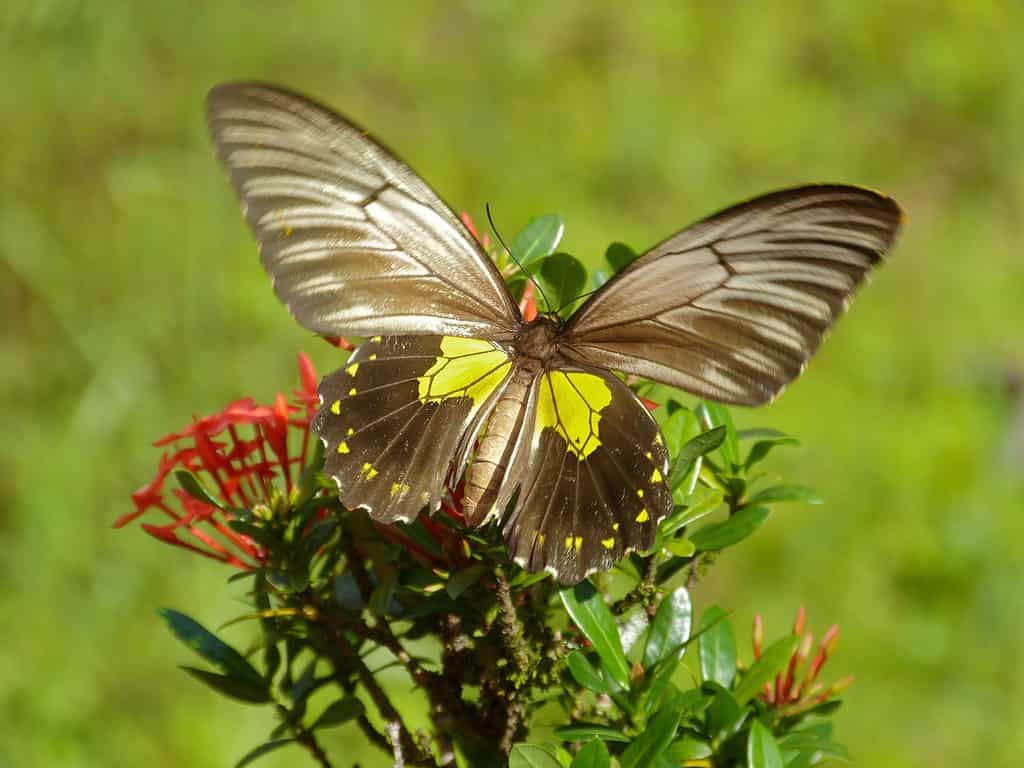
The Miranda birdwing is named for the scientist that initially described the species in 1869.
The Miranda birdwing butterfly can have a wingspan of up to 6 ½ inches and is found in Borneo and Sumatra. This butterfly is not endangered and is classified as being of least concern. The Miranda birdwing is named for the scientist that initially described the species in 1869, Miranda Butler.
#9: Magellan Birdwing – 7.1 inch wingspan
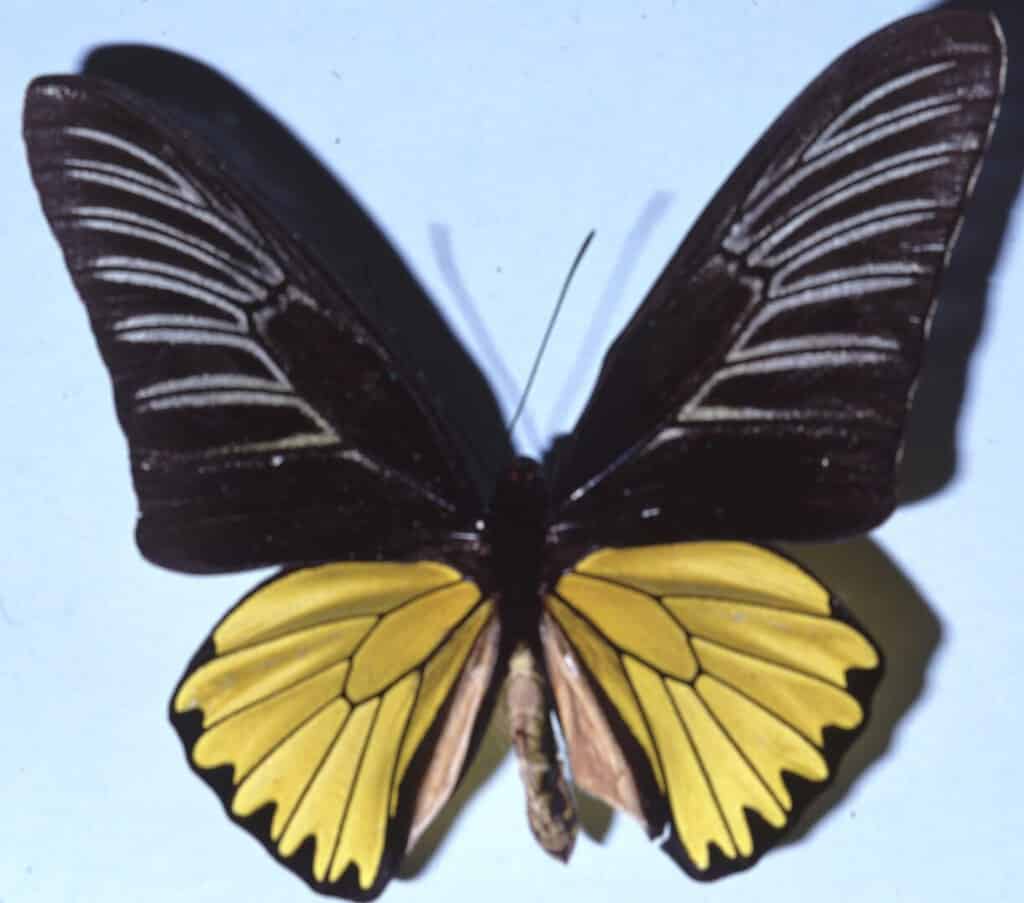
This butterfly is named for the explorer Ferdinand Magellan.
©Robert Nash / CC BY-SA – License
The Magellan birdwing butterfly can have a wingspan as large as 7.1 inches across. This butterfly can be found in the Philippines and Taiwan on Orchid Island and has a conservation status of least concern. The Magellan birdwing has iridescent wings such that at an oblique angle, blue and green light is refracted. This butterfly is named for the explorer Ferdinand Magellan who died in the Philippines in 1521.
#8: Chimaera Birdwing – 7.1 inch wingspan
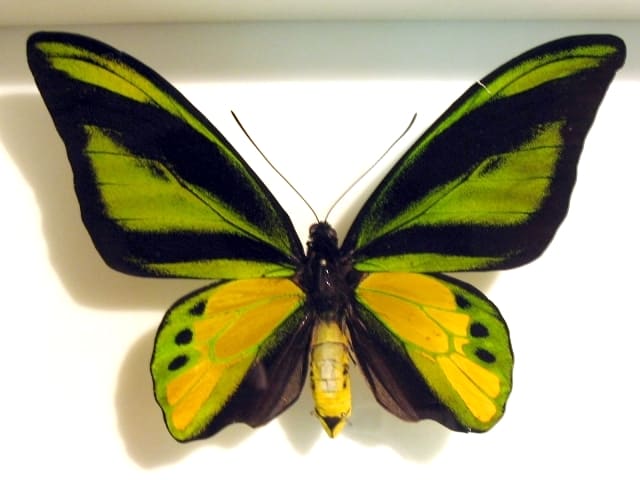
The name “chimaera” comes from a Greek mythological creature.
©Fernando Lisón Martín / CC BY-SA – License
The chimaera birdwing butterfly has a massive wingspan of 7.1 inches across, tying it with the Magellan birdwing. This butterfly is found in mountainous regions of Papua New Guinea and is considered near threatened. The chimaera birdwing, like many butterflies, is a sexually dimorphic species with the males having bright green wings and the females having larger, dark brown and white wings. The name “chimaera” comes from a Greek mythological creature that is a hybrid of multiple animals.
#7: Wallace’s Golden Birdwing – 7.5 inch wingspan

Wallace’s golden birdwing isolated against a white background
©feathercollector/Shutterstock.com
Wallace’s golden birdwing has an impressive wingspan reaching up to 7.5 inches. This butterfly was a vulnerable species but was reclassified as near threatened in 2018 due to successful conservation efforts restricting international trade. Wallace’s golden birdwing can be found in Indonesia and lives primarily in lowland swamp environments. This butterfly is named after Alfred Russel Wallace who first described the species in 1859. In his book The Malay Archipelago, Wallace describes his reaction upon first seeing the beautiful butterfly and says, “On taking it out of my net and opening the glorious wings, my heart began to beat violently, the blood rushed to my head, and I felt much more like fainting than I have done when in the apprehension of immediate death”.
#6: Palawan Birdwing – 7.5 inch wingspan
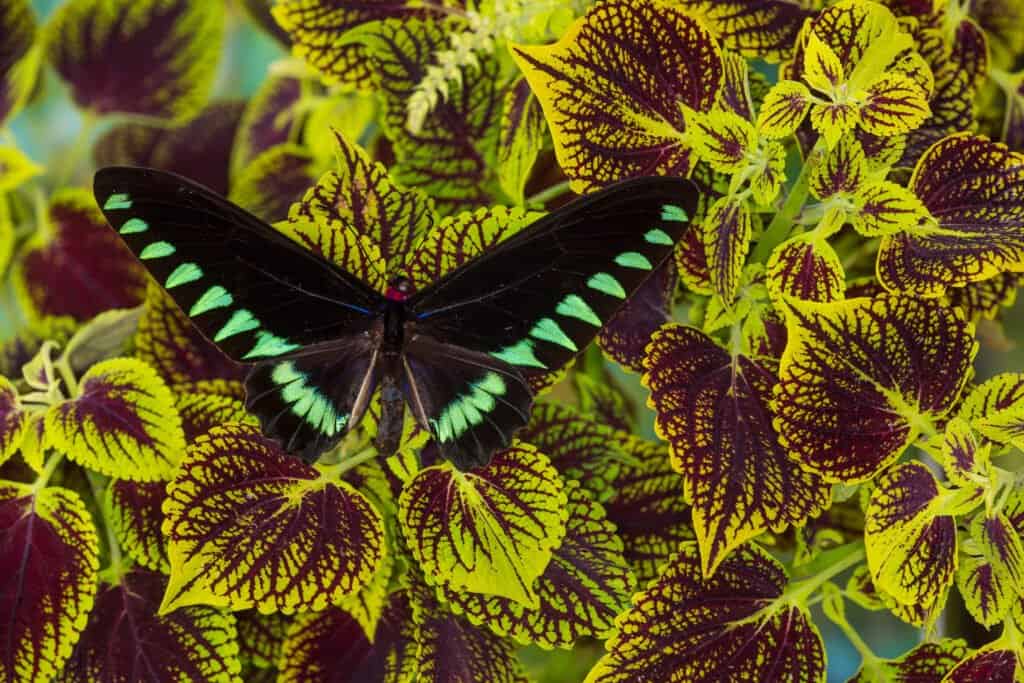
The Palawan birdwing can be found in the Philippines
©Danita Delimont/Shutterstock.com
The Palawan birdwing and Wallace’s golden birdwing tie with an impressive wingspan of 7.5 inches. The Palawan birdwing, also known as the triangle birdwing, is found only in Palawan in the Philippines. These butterflies are most prolific around Cleopatra’s Needle, a mountain in Palawan, but are seen year-round in other mountain ranges as well.
#5: Rippon’s Birdwing – 7.9 inch wingspan
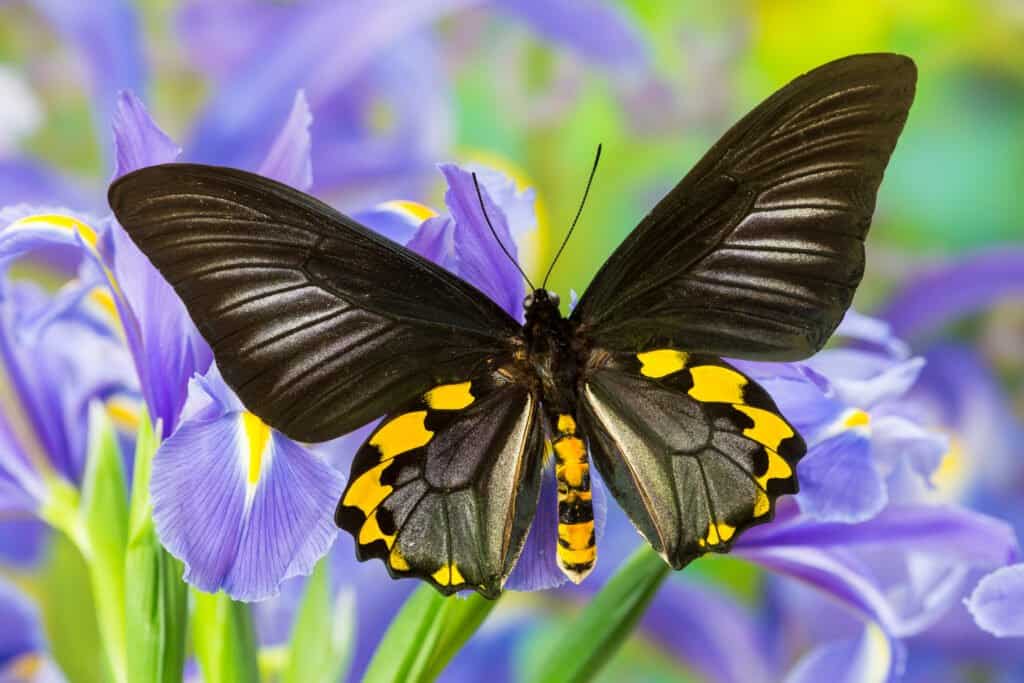
The rippon’s birdwing can be found in Indonesia
©Danita Delimont/Shutterstock.com
Rippon’s birdwing butterfly has a massive wingspan reaching up to 7.9 inches. This butterfly is endemic to Moluccas and Sulawesi in Indonesia and is a protected species but is not considered endangered. It is hypothesized that the bright yellow coloration of Rippon’s birdwing works to deceive predators and imitate a wasp as a defense mechanism.
#4: Buru Opalescent Birdwing – 7.9 inch wingspan

The Buru opalescent birdwing lives at altitudes that can reach a mile high!
©Unknown / Public Domain – License
At 7.9 inches across, the Buru opalescent birdwing butterfly has an incredible wingspan similar in size to that of Rippon’s birdwing. This butterfly exists only in Buru in the Moluccas Islands of Indonesia and inhabits high altitudes of 1300 to 1600 meters. The Buru opalescent birdwing is classified as a vulnerable species that is at risk of becoming extinct in the wild. These butterflies are threatened primarily by specimen collection and habitat destruction due to logging.
#3: African Giant Swallowtail – 9.1 inch wingspan
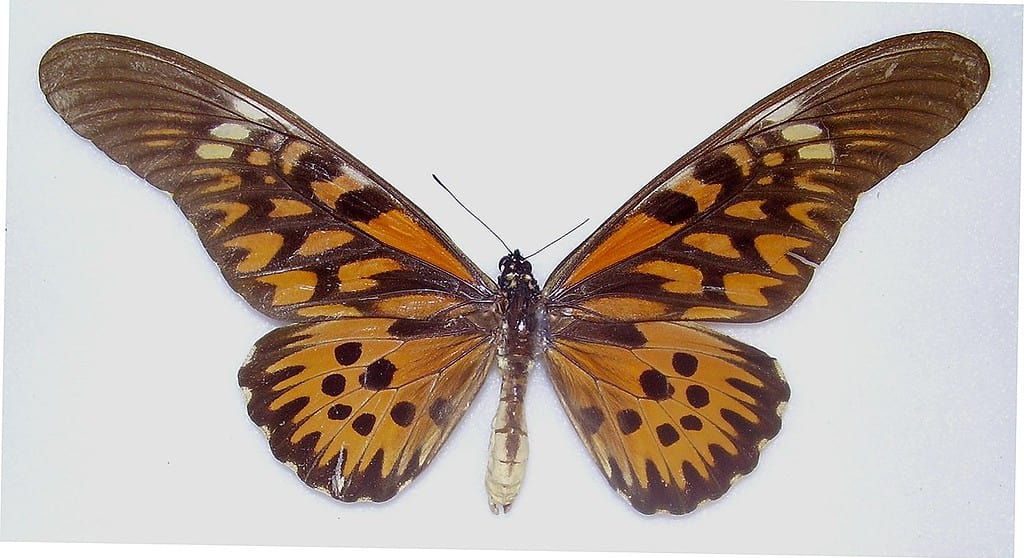
The African giant swallowtail is extremely toxic and can cause sickness and possibly death if ingested.
©Robert Nash / CC BY-SA – License
The African giant swallowtail is a gargantuan butterfly with a breadth of 9.1 inches. This butterfly is the largest butterfly in Africa and has a vast geographic range throughout 12 African countries. The African giant swallowtail has no natural predators because it is extremely toxic and can cause sickness and possibly death if ingested. The conservation status of this butterfly is “data deficient” meaning there is insufficient information to properly classify it.
#2: Goliath Birdwing – 10-11 inch wingspan
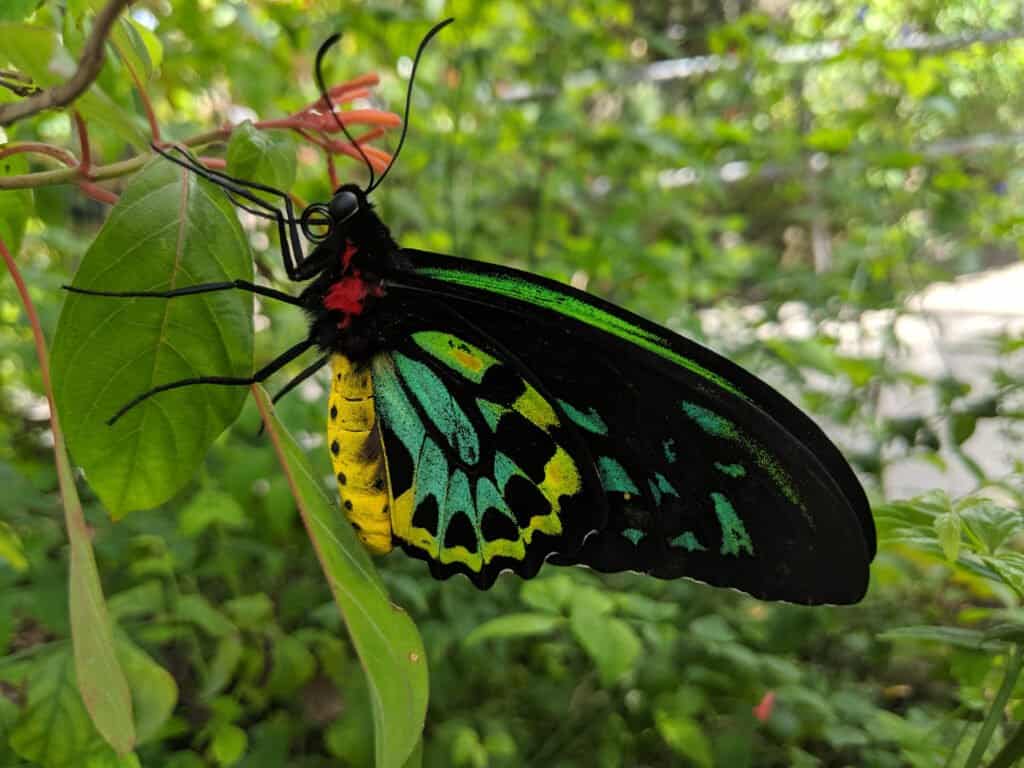
Goliath birdwings can grow to over 10 inches in wingspan
©tome213/Shutterstock.com
The world’s second-largest butterfly has huge wings that span up to 11 inches wide. The Goliath birdwing butterfly lives in the rainforests of Papua New Guinea and neighboring islands and has a conservation status of least concern. This butterfly was named after the biblical giant Goliath due to its tremendous size and its subspecies are also named after mythological giants including Titan, Atlas, and Samson.
#1: Queen Alexandra’s Birdwing – 11 inch wingspan
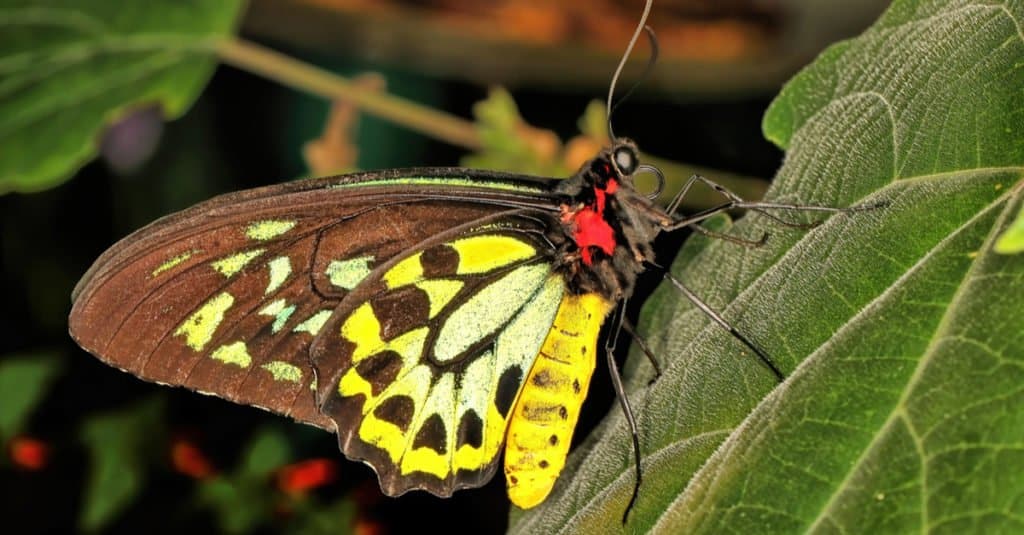
Queen Alexandra’s birdwing has beautiful wings spanning an incredible 11 inches.
©Russell Marshall/Shutterstock.com
The world’s largest butterfly, with a colossal 11-inch wingspan, is the Queen Alexandra’s birdwing. This butterfly is named for Alexandra of Denmark who was Queen of the United Kingdom and Empress of India from 1901-1910. The Queen Alexandra’s birdwing is classified as endangered and exists only in a 40 square-mile section of coastal rainforest in Papua New Guinea. Resultantly, this butterfly is one of only three insects listed in Appendix I of CITES (Convention on International Trade of Endangered Species) prohibiting all international trade of this species. A volcanic eruption of Mt. Lamington in 1951 caused habitat destruction that contributed to the decline of Queen Alexandra’s birdwing.
Summary
Butterflies come in a wide variety of sizes and colors. They are not only beautiful but also extremely useful as pollinators. These are the twelve largest butterflies:
| Species | Wingspan | |
|---|---|---|
| 1. | Queen Alexandra’s Birdwing | 11 inch |
| 2. | Goliath Birdwing | 10-11 inch |
| 3. | African Giant Swallowtail | 9.1 inch |
| 4. | Buru Opalescent Birdwing | 7.9 inch |
| 5. | Rippon’s Birdwing | 7.9 inch |
| 6. | Palawan Birdwing | 7.5 inch |
| 7. | Wallace’s Golden Birdwing | 7.5 inch |
| 8. | Chimaera Birdwing | 7.1 inch |
| 9. | Magellan Birdwing | 7.1 inch |
| 10. | Miranda Birdwing | 6.5 inch |
| 11. | Lesser Batwing | 6.4 inch |
| 12. | Jamaican Giant Swallowtail | 6 inch |
The photo featured at the top of this post is © Napalai Studio/Shutterstock.com
Thank you for reading! Have some feedback for us? Contact the AZ Animals editorial team.






